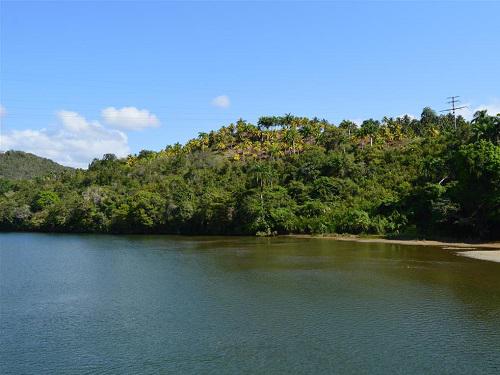Yulima González Díaz
The goals of this project are to gather ecological information on the geographically restricted Cuban cichlid Nandopsis ramsdeni (Joturo), to identify priority habitats for the conservation of this species and to develop training actions in local communities for the conservation of the target species and linked habitats at the National Park Alejandro de Humboldt, Cuba.

Typical biotopes for reproduction of Nandopsis ramsdeni, Toa River.
Freshwater fish fauna from Cuba is the most diverse in the Caribbean Islands. Particularly, western Cuba is the region where occurring the highest number of endemic fish species; hence, some important ecological studies and conservation assessments on fish populations from this area have been accomplished lately. However, freshwater fish fauna from the eastern Cuba has scarcely been studied at present, despite this is very important area for the conservation of some confined endemic species and exclusive habitats. In fact, there is a local endemic species from the extreme eastern Cuba, the Cuban Cichlid Nandopsis ramsdeni (Joturo), listed as endangered in 2012 by Cuban specialists following the IUCN criteria. This species is in conflicts with native communities because it´s highly consume as diet by local people. Unfortunately, the information gap regarding to the ecology and life history traits on this species makes impossible to apply right protocols aimed to long-term conservation of the target species and linked habitats.
The current proposal will provide key information about natural history of the Cuban Cichlid Nandopsis ramsdeni (Joturo), an unknown and vulnerable freshwater fish species occurring only in particular ecosystems located at the National Park Alejandro de Humboldt, eastern Cuba. The activities linked to the project will provided information in relation to life cycle, population parameters and some ecological requirements on this species, which are indispensable to accomplish monitoring and management on natural populations. In addition, this proposal will identify priority habitats for the conservation of the focal species and, as a result, using it as umbrella species, will be ensuring the conservation of the related biota (flora and fauna) to these ecosystems. On the other hand, the project will develop training activities involving local communities.
Information resulted from the field work will be undoubtedly useful for the knowledge on the natural history and conservation of the involved species and their habitats. Data derived from this study will be processed and published both in national and foreign specialized journals. This will contribute to spread needed information for implement well designed conservation strategies.